These super tender Korean Gochujang Sticky Boneless Beef Short Ribs are some of THE BEST short ribs you’ll ever eat! This finger-licking sauce is kind of spicy, ,kind of sweet and a whole lot of sticky in the best way!
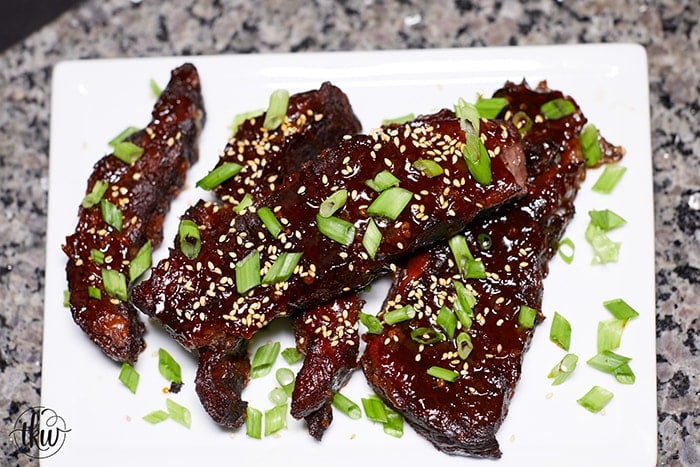
WOW! You guys went NUTS over my Korean Gochujang Sticky Chicken Wings (Instant Pot) recipe that I posted last week. And then when I posted a sneak peek of the short ribs some of you DM’d me to death saying I needed to post the recipe next. I so love your enthusiasm; thank you! Short ribs and Picanha are probably my favorite cut of beef.
Don’t get me wrong as I pretty much can cook the heck out of any cut of beef and it will turn out delicious but there’s just something a bit more special about short ribs. I find them to be so much more flavorful and tender. Maybe that explains the price here in Pittsburgh being pretty steep.
8 quality grades of beef
I’m not one to shy away from spending a bit more on amazing quality. As a chef, I know that there truly is a difference between spending $10 a pound for steak at one place and paying $2.99 at another for the “same” advertised piece. Not all cows are the same. You can see the difference in the quality just by looking at the marbling, the fat, the grain, and so forth. Just like when you were in school, meat has grades. There are actually 8 quality grades of beef.
- USDA Prime
- USDA Choice
- USDA Select
- USDA Standard
- USDA Commercial
- USDA Utility
- USDA Cutter
- USDA Canner
It’s actually pretty interesting to see how meats are actually graded. Check out the USDA Food Safety and Inspection Services’ (FSIS) website as they explain these gradings well.
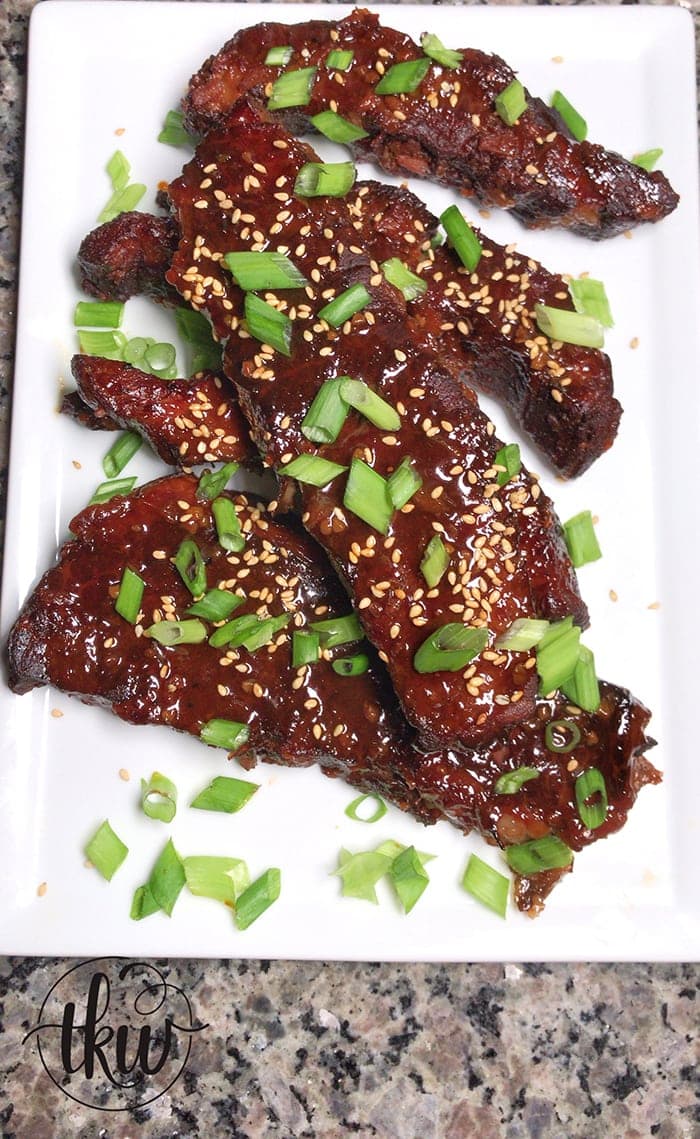
The other HUGE factor, besides grading that is equally important, is knowing where your meat comes from, and how they were raised, treated, and not given hormones. I want a company to be fully transparent with me.
This is why I teamed up with ButcherBox. They ensure that the source where their products come from is from animals that were humanely raised, grazed on grass, and were never given growth hormones or antibiotics than simply measure the amount of marbling within a cut.
Grain-fed cattle are raised to get fat quickly, which enhances their marbling. Grass-fed cows are leaner, and therefore have less intramuscular fat within each steak. While the USDA beef grades consider this a disadvantage, we look at it as a selling point. We prefer grass-fed beef because they were fed a healthy diet of grass and forage, resulting in a cut of meat that is lower in bad fats and higher in key nutrients.
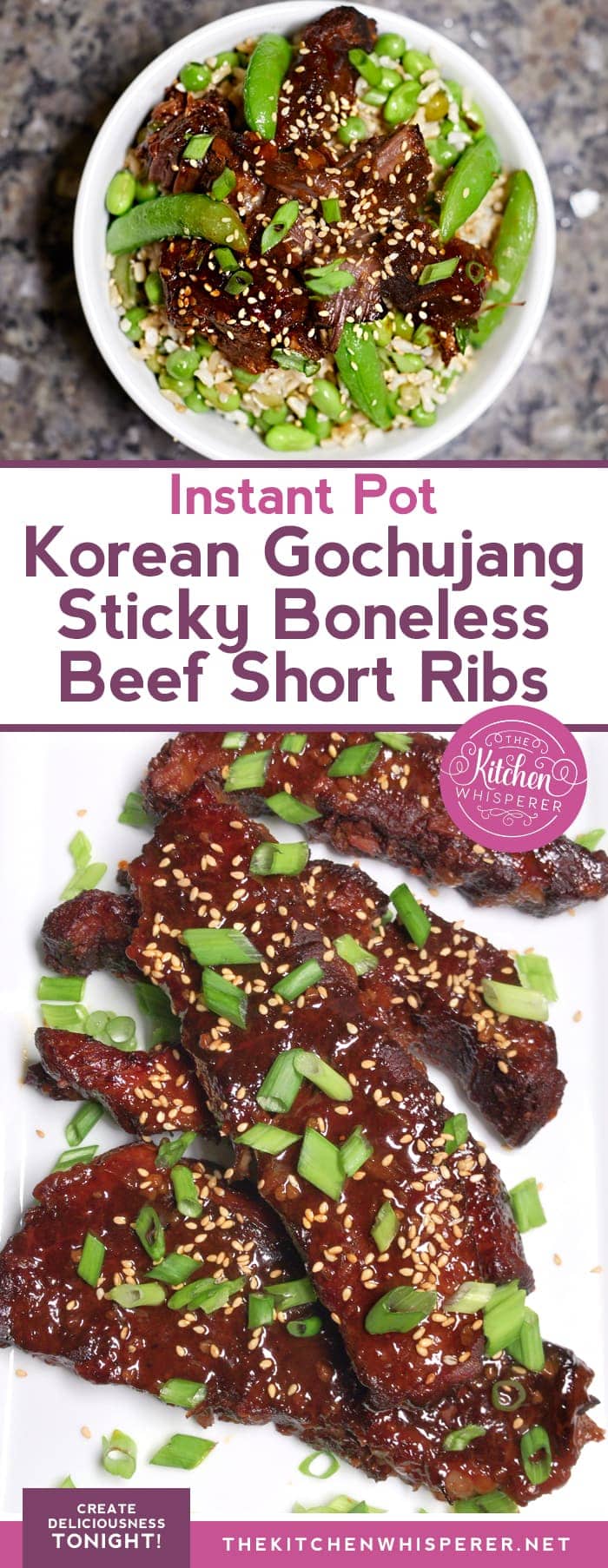
Whoa.. what’s this?
This is coming up! This is my Instant Pot Korean Gochujang Sticky Boneless Beef Rice Bowl. As mentioned a while back part of what I plan on doing this year is showing how my recipes can be used in various other recipes. What I’m doing, for example, with this short rib recipe below is giving you a foundation item. And once you have that, I’ll be sharing ways to transform that foundational item into multiple meals that aren’t repeated.
So for example this short rib recipe I made the rice bowl for weekly meal prep, also used it in nachos (seriously Korean nachos are CRAZY legit!), on a pizza (no for real, you have not lived until you had this on a pizza!) and other ways. This is one thing my Mom was a master at doing. She knew how to stretch a single foundational food and transform it into new and delicious recipes every night. So it never felt like we were eating leftovers.
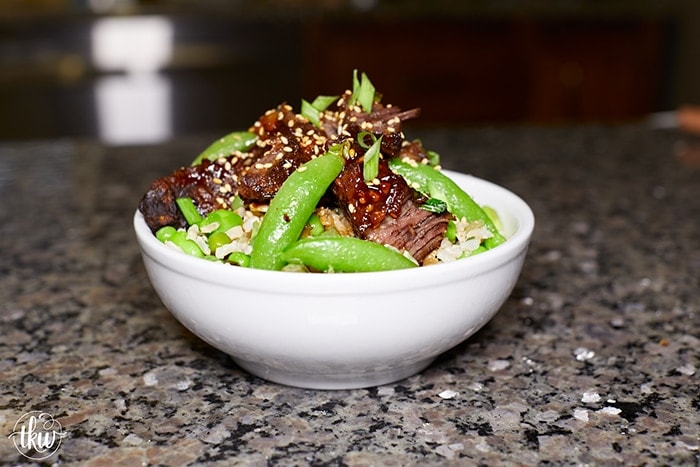
Get ready to lick your lips (and fingers!)
If you made my Gochujang wings then you know. You know!
If you haven’t then my dear, dear friends you are depriving yourself of one of the BEST flavor experiences ever! If you know Mr. Fantabulous you will know that man is pickier than a 5-year-old. I originally made this recipe for me and for him, a whole bunch of wings. He’ll eat short ribs but he’s not a huge fan of ribs in general.
To him, he thinks all ribs are fatty and has a hard time distinguishing what’s really, REALLY tender meat and what’s well, fat. Luckily for me, was in the kitchen when I was prepping the meat. I actually was educating him on meat grades, marbling, and why spending $40 on almost 4 pounds of short ribs was worth it.
I purposely pointed out the little to no fat on these and said that these were going to be exceptionally tender ribs. He, of course, just asked what was for dinner. LOL
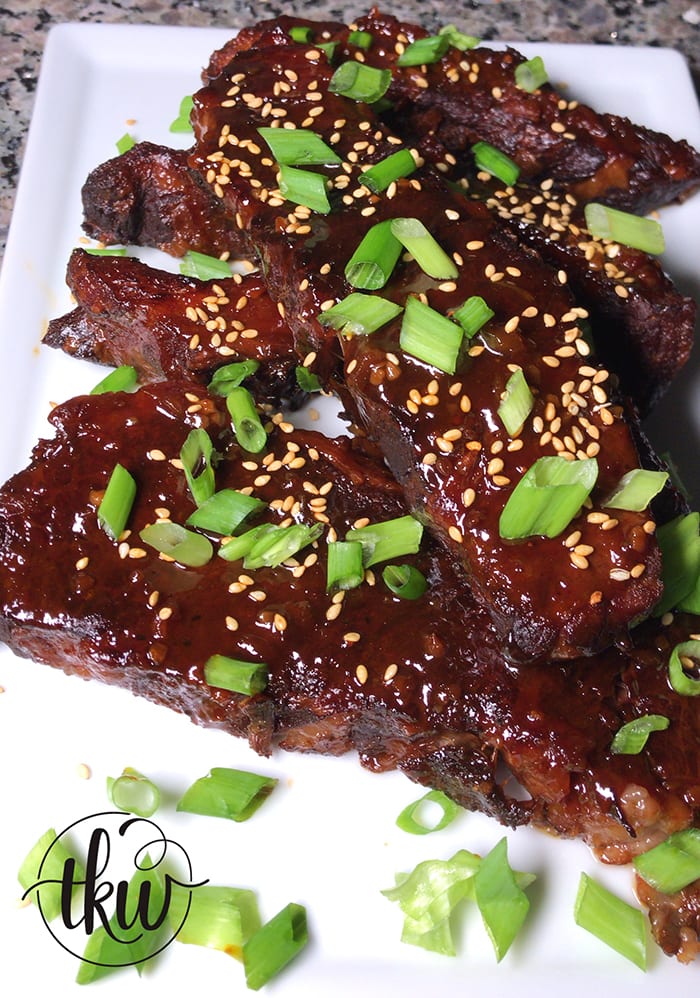
Oven Baked Method
So many of you asked how you could make this in the oven as you might not have a Pressure Cooker. No worries, I got’chu. They are made almost identical (minus the ingredients) as my Slow-Baked Boneless Beef Short Ribs.
- Preheat the oven to 300F with a rack in the middle. Add 1 cup of Beef stock/water. You will need to add extra liquid so these do not dry out.
- Season the short ribs with salt and pepper. Place them in a 13×9″ glass baking dish or larger. This will be a tight squeeze. Pour about 1/2 cup of the sauce over the short ribs.
- Flip the ribs over using tongs and spoon another 1/2 cup of the sauce over top. Reserve the remaining Gochujang sauce to spoon over the cooked ribs. Cover the pan with foil and roast for 2 1/2 hours.
- Remove the foil and gently flip the short ribs. Spoon more of the sauce over the top. Cook for 30 minutes more (uncovered), until the meat is tender and browned. Check the ribs every 10-15 minutes to ensure that they are coated with sauce and that the pan does not go dry. Transfer the short ribs to a serving platter. At this point, you can discard the cooking liquid or pour it into a fat strainer to allow it to separate. (This is what I did). Pour the juices into a medium saucepot, leaving the fat greasy part behind.
- Once it has thickened, go in and baste the ribs with the sauce.
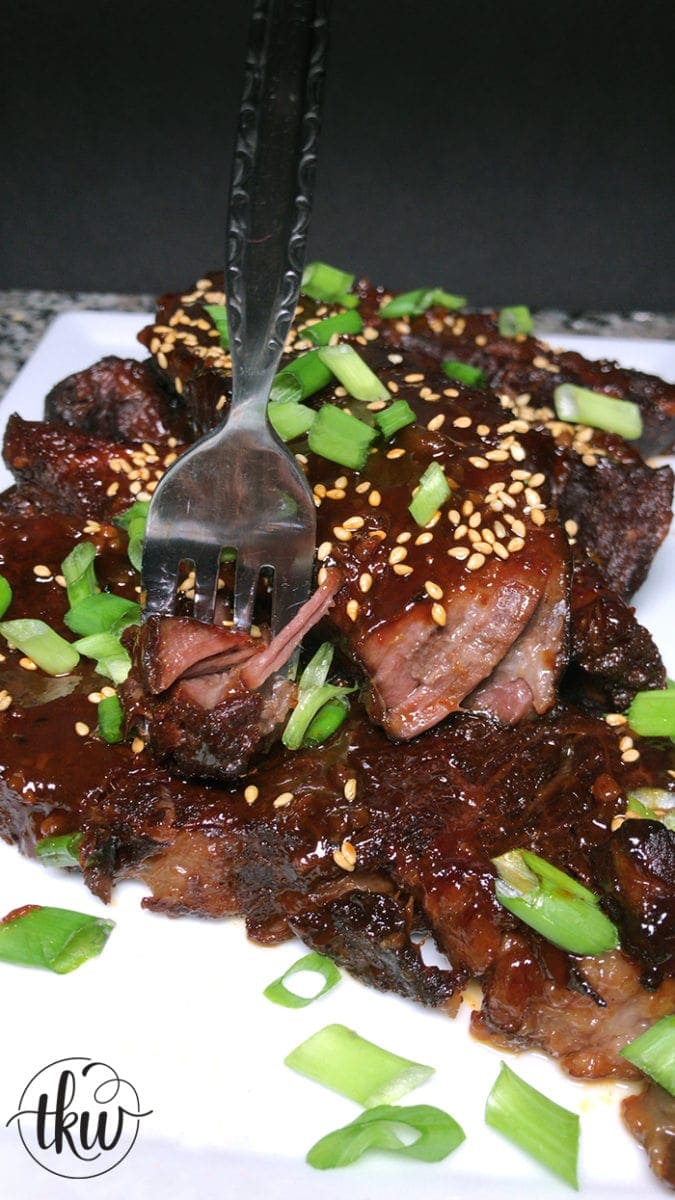
As you can see these short ribs were fork tender. They were so tender, in fact, that I had a hard time taking them out of the pressure cooker as they were just falling apart. The meat melts in your mouth that you practically don’t have to chew. I mean I recommend you actually chew your food but you get the idea. But Mr. Fantabulous went nuts over these. Like the man that, up until a week or so ago, never even heard of Gochujang, DEVOURED these! He preferred these over the wings and asked when I was making more.
Now, if you can’t find fantastic-quality short ribs in your area, you can use flap meat or even beef shank.
And for those who are curious if this works on bone-in-short ribs, YES! Just bump up the time another 5 minutes or so, and you should be good to go!

These would be amazing with rice, quinoa or creamy mashed potatoes. But stay tuned for the rice bowl recipe coming soon!
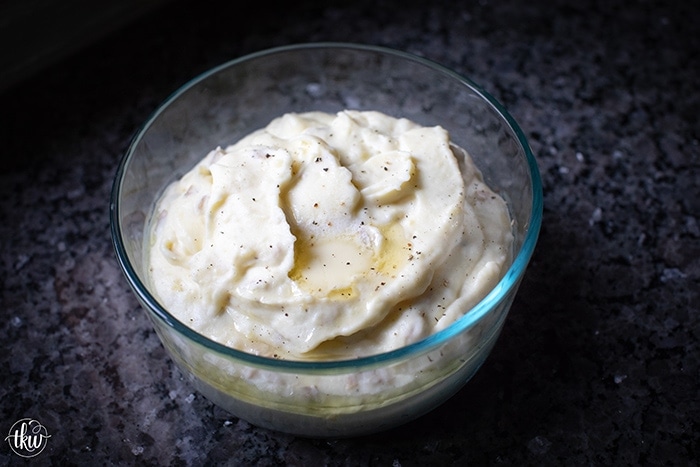
Looking For More TKW Family Favorite Recipes?
These recipes are favorites of yours (and mine!). Check them out and see why thousands globally have fallen in love with them.
Korean Gochujang Sticky Boneless Beef Short Ribs
These super tender Korean Gochujang Sticky Boneless Beef Short Ribs are some of THE BEST short ribs you’ll ever eat! This finger-licking sauce is kind of spicy, kind of sweet and a whole lot of sticky in all the best way!
- Prep Time: 20
- Cook Time: 35
- Total Time: 1 hour
- Yield: serves 4
- Category: beef, korean, spicy
- Method: instant pot and oven
- Cuisine: beef, korean, spicy
Ingredients
- 4 pounds boneless beef short ribs
- 3/4 cup light soy sauce, low sodium
- 2 tablespoon sesame oil
- 2 teaspoon rice vinegar
- 1/2 teaspoon kosher salt
- 1/2 teaspoon black pepper
- 3/4 teaspoon red chili flakes
- 4–5 tablespoon Gochujang (red chili paste) *go with 3 if you don’t like spicy
- 1/3 cup plus 2 tablespoon honey
- 1 tablespoon minced garlic (about 2–3 large cloves)
- One -1” piece fresh ginger, peeled and minced
- Minced green onions
- White sesame seeds
Instructions
- Line a rimmed baking sheet with foil and place a cooling rack inside; set aside. Place your oven rack on the upper third tray. In a large bowl whisk together the soy sauce, sesame oil, vinegar, salt, pepper, chili flakes, Gochujang, honey, garlic, and ginger. Place your short ribs in the bowl and gently toss/stir to coat all of the meat. Allow it to rest for 10 minutes. If you’re in a hurry you can skip this part and dump it all into the Instant Pot/Pressure Cooker. Add the ribs and the liquid to your Instant Pot.
- Close the lid on your IP, and set the cooking time to 35 minutes/High pressure. When the time is up, allow the pressure to release naturally (15 minutes).
- With tongs, carefully (they will be fall-apart soft!) remove the ribs to the rimmed baking sheet and set the IP to sauté or brown function as you’ll need to thicken up the sauce. Depending on how watery your ribs were your sauce can take 10-25 minutes to get to a thickened state. Just stir often to not burn. The sauce should be thick enough to coat the back of the spoon. Once it gets to that state, remove it from the pot and place it in a container to use for basting.
- Once the sauce is thickened, turn the oven on to broil. Slather one side of the ribs with the thickened sauce and broil just for a minute as you want to slightly char the sauce but not burn it. Remove from the oven, flip, baste, and return to the broiler for another minute.
- Remove from the oven and sprinkle with sesame seeds and green onions. Store the remaining sauce in the fridge for up to a week.
Notes
Want to know how to make it in the oven? Read the post for the details!







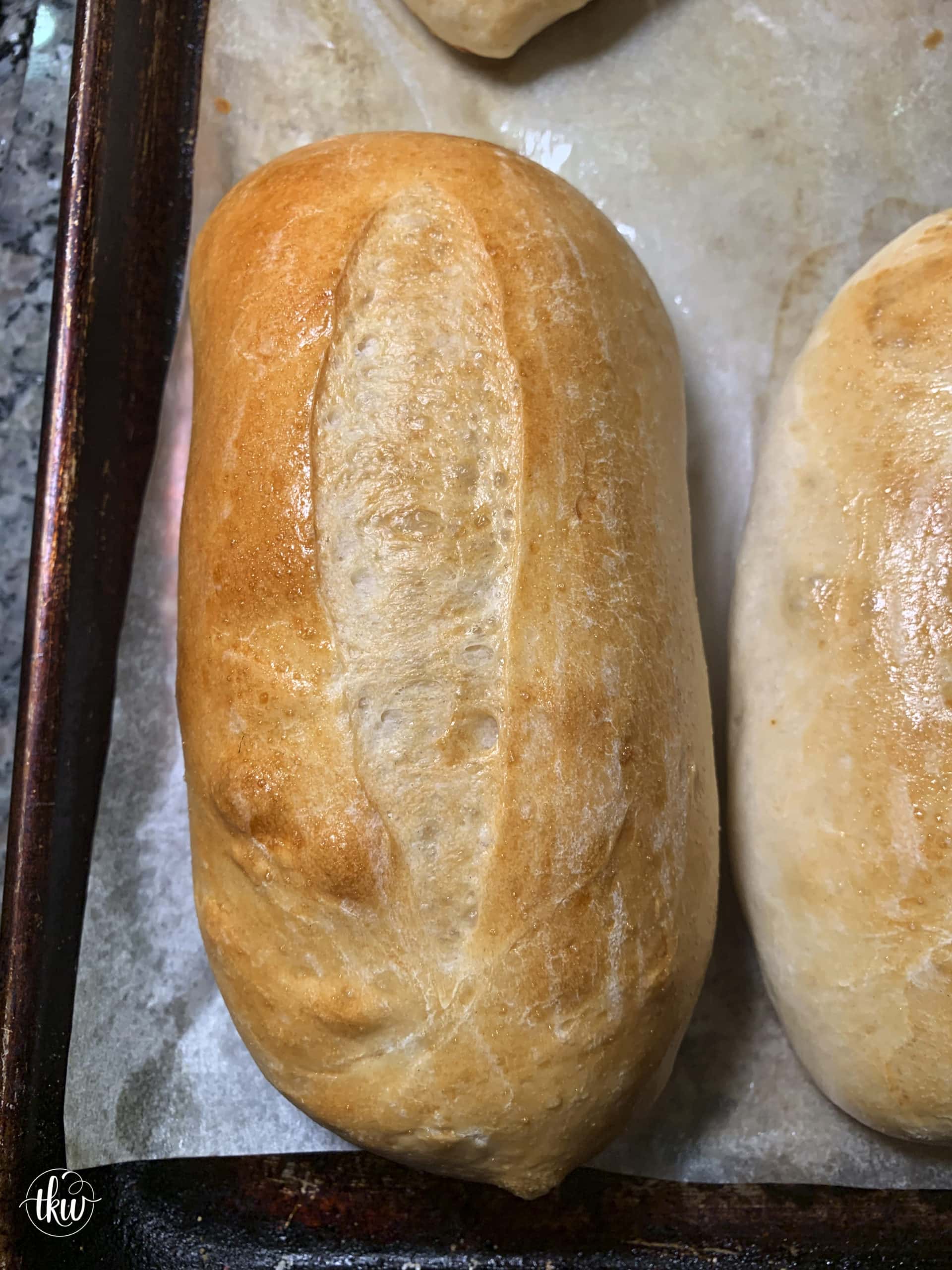
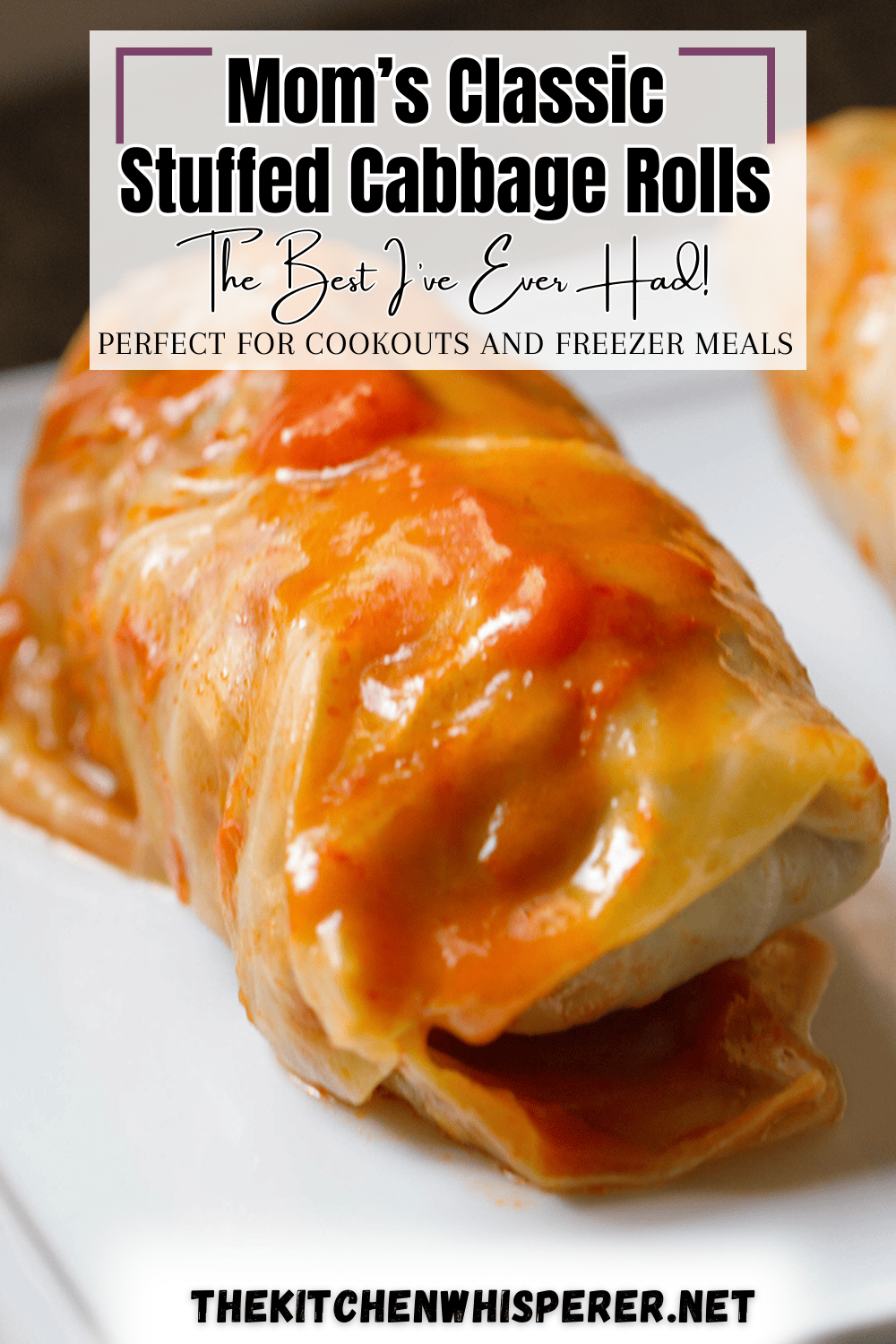
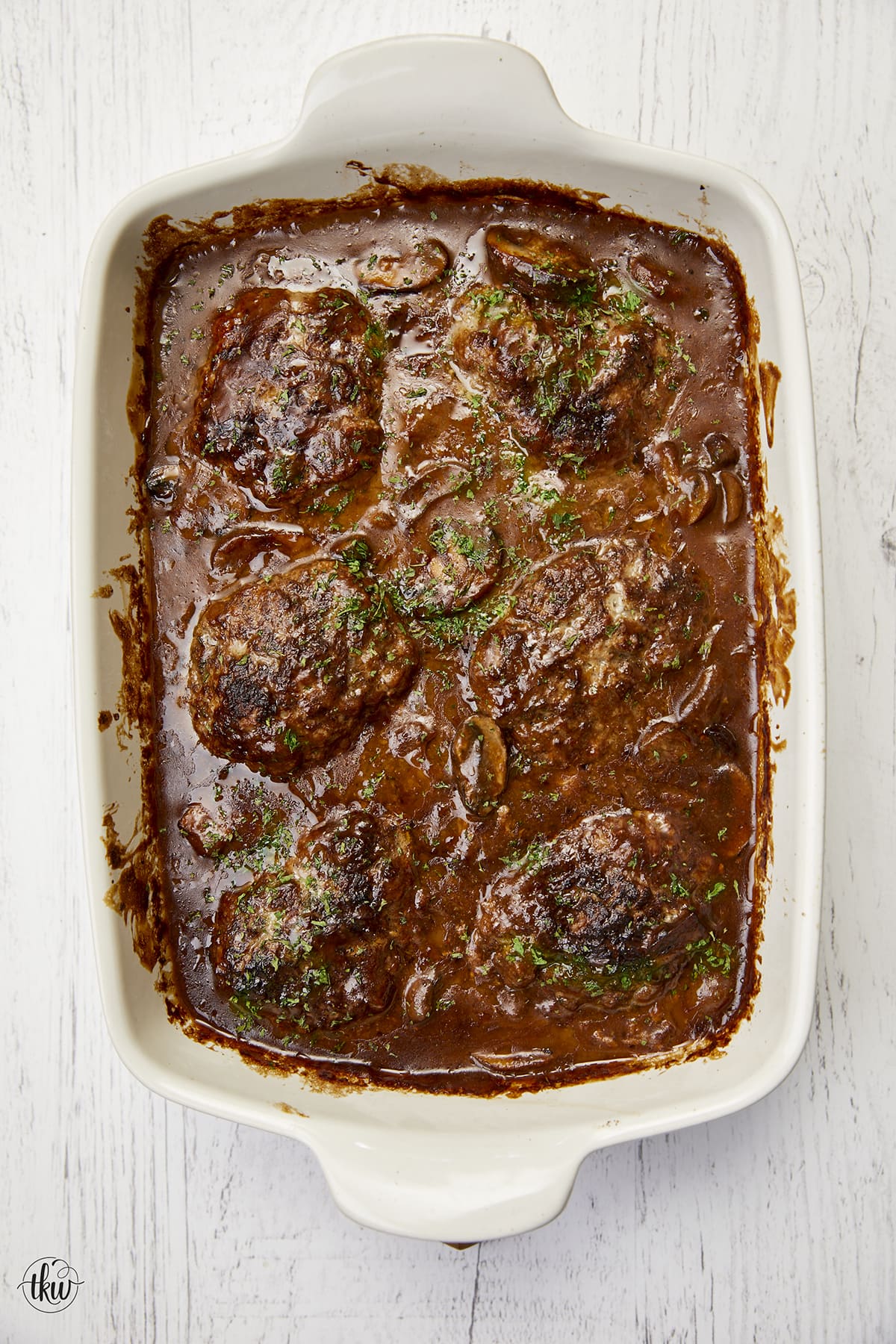

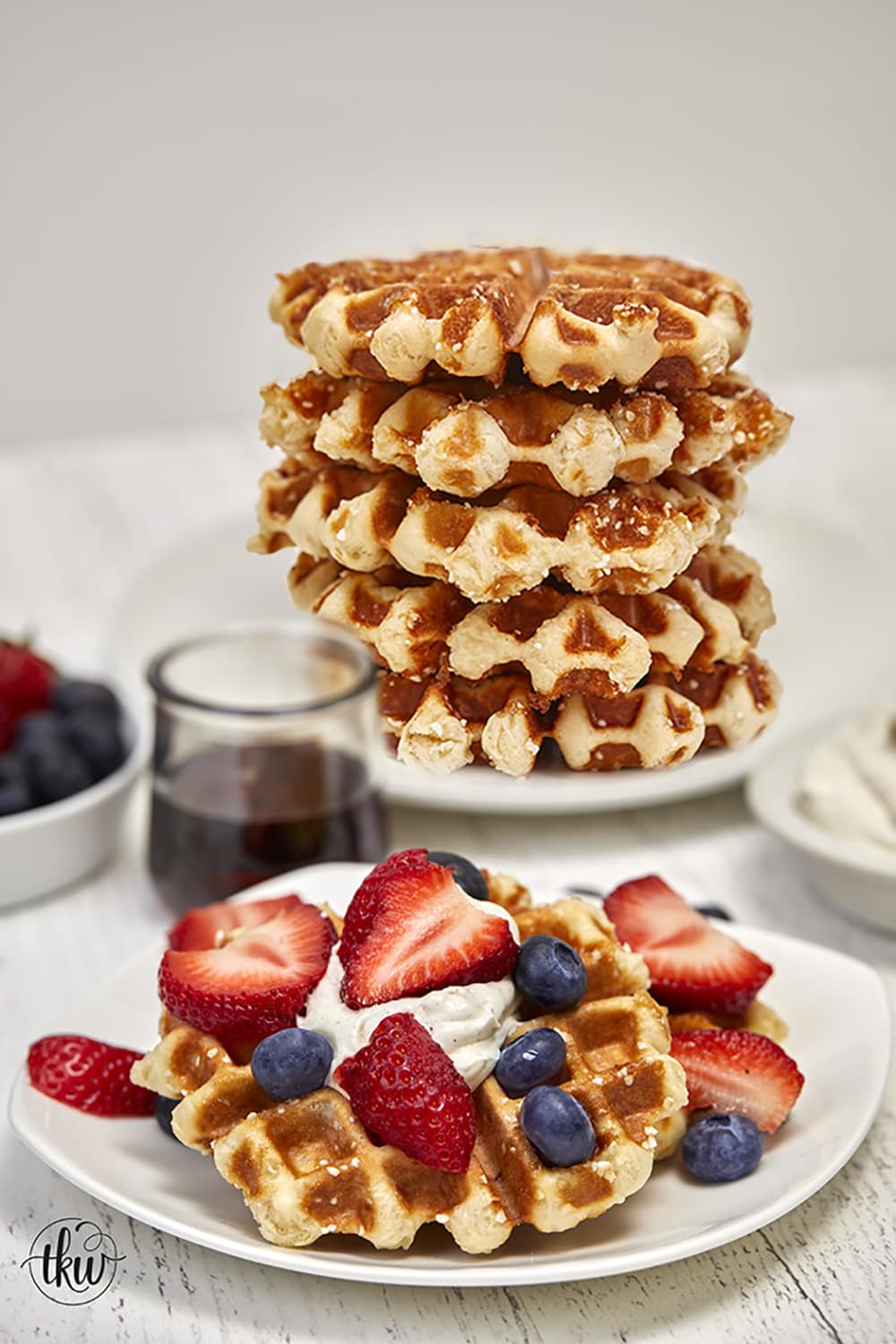

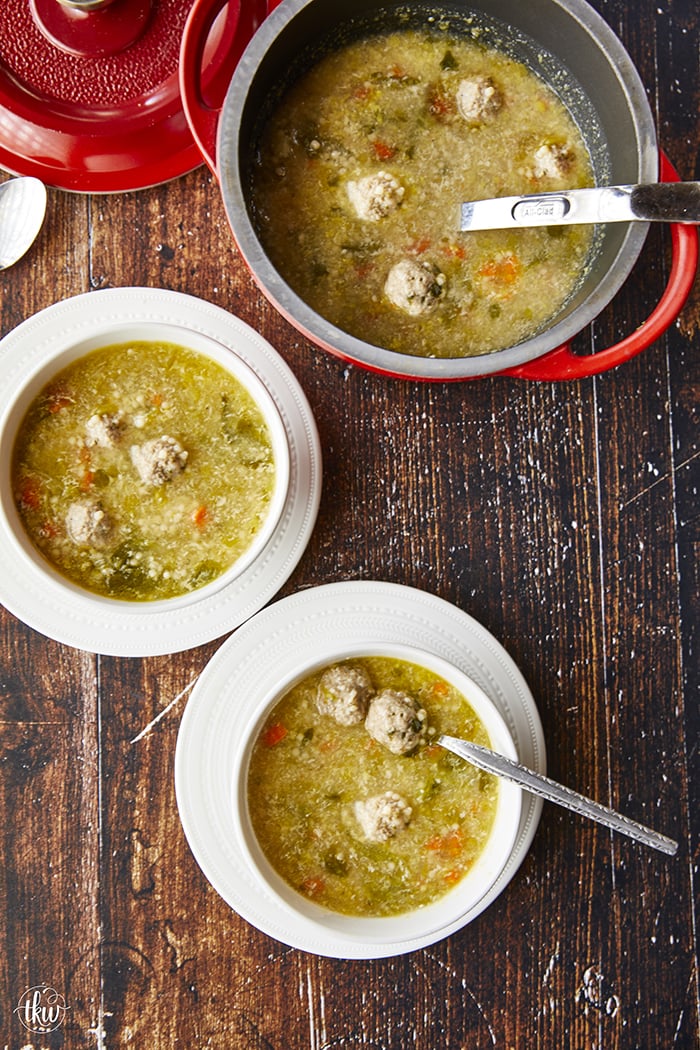
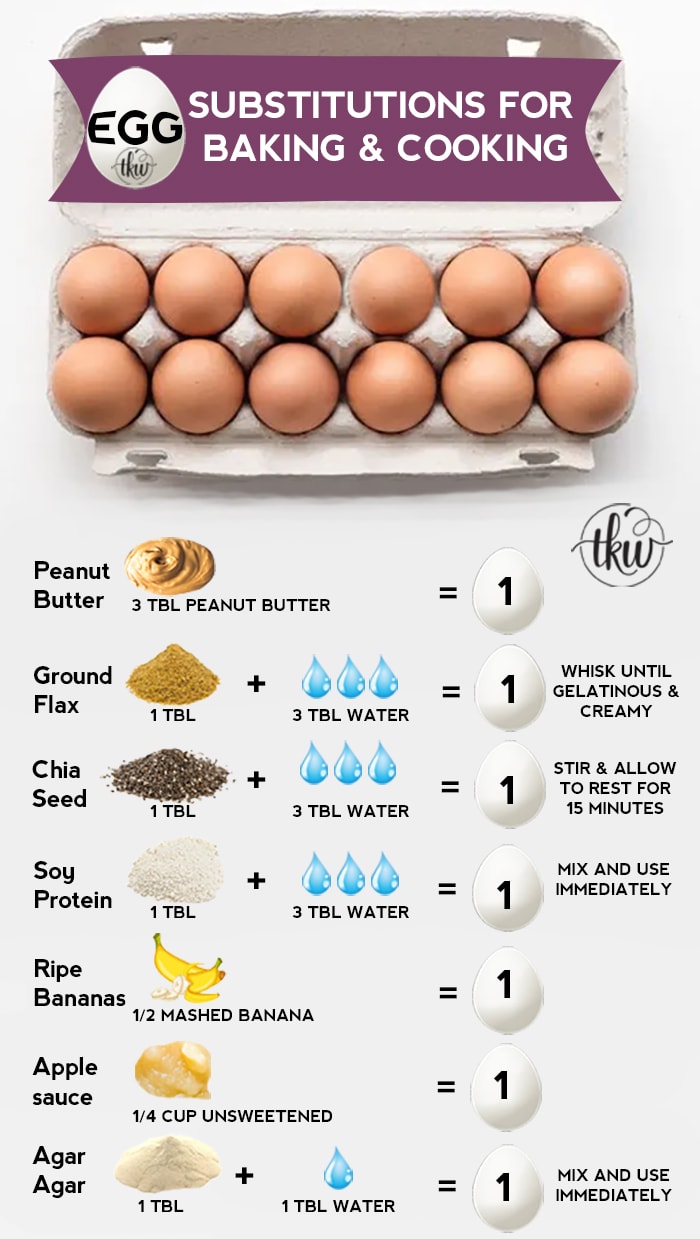
Leave a Reply